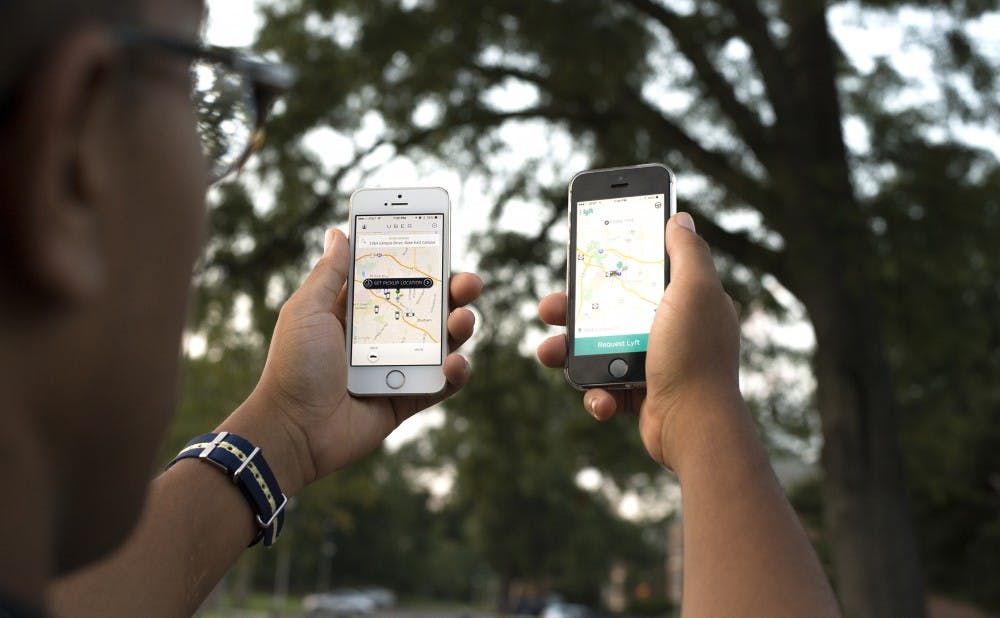With ride sharing services such as Uber and Lyft spiking in popularity, Durham cab companies are finding themselves forced to adjust their business models.
Since bringing its services to the Triangle area in April, Uber has quickly gained local customers, company representatives said. The service is particularly popular with students—including those at Duke—and now, local cab companies are considering alternate strategies as they watch business falter
“We’ve definitely lost some business, I’ll admit it,” said Hussam Hassan, president of Durham’s Best Cab Company.
Hassan said that the company is in the process of developing a ride-tracking application similar to Uber, in addition to investing more money in advertising.
Another local cab company, Charlene's Safe Ride, said it is also adjusting its strategies in order to better compete with Uber.
“We like new technologies and we always do our best to provide our clients with what other competitors provide," operations manager Bell Belahouel wrote in an email Monday. "A few of our drivers signed up for Uber [or] Lyft and we are encouraging all our 25 drivers to do the same. You may order a ride with Uber...and ride with a Charlene's driver.”
Belahouel noted, however, that local cab companies have been frustrated that Uber and Lyft have skirted rules in attempts to gain riders.
“Legally, Uber [and] Lyft are operating as technology service providers," he wrote. "Their private drivers are not allowed to conduct business at [Raleigh-Durham International Airport] due to the lack of permits but have been showing up for a while.”
But although Uber has inconvenienced local cabs, it has been embraced by many students.
“Uber is a lifesaver for me," said freshman Gurbani Singh. "Uber is, hands down, my top choice.... Uber is quick, reliable, very affordable and by far the most convenient and needless to say the best mode of transport for me.”
Many Uber clients in the Triangle area are students, said Arathi Mehrotra, general manager for Raleigh-Durham Uber. The company is keeping the student perspective in mind as they expand—particularly in regards to affordability and consistently available late-night options.
The service functions by allowing riders to file a request for a car on their cell phone. The rider can then use the mobile application to track the approaching car on their phone and pay for the ride.
Two weeks ago, Uber launched a new program in the area—Uber XL, an SUV-service that allows up to six people to ride at once. Mehrotra declined to provide specific numbers but said the company has "received an outpouring of positive response” since starting the program.
Uber spokesperson Taylor Bennett noted that Uber brings a level of transparency to the cab experience that is not found with traditional taxis.
“The ability to know who’s showing up, in what vehicle—the ability to track your vehicle just offers so much transparency that we are proud of and helps the riders to have the best experience possible not only in terms of transportation but also safety and reliability,” Bennett said.
But from Hassan's perspective, Uber cannot replicate the full experience of a local cab company that is well-established.
“We’ve been in business for 15 years," he said. "Our drivers go through rigorous background checks and inspections every year so we can ensure the safety of our customers."
This story was updated Sept. 15, 2014 to reflect new information.
Get The Chronicle straight to your inbox
Signup for our weekly newsletter. Cancel at any time.

